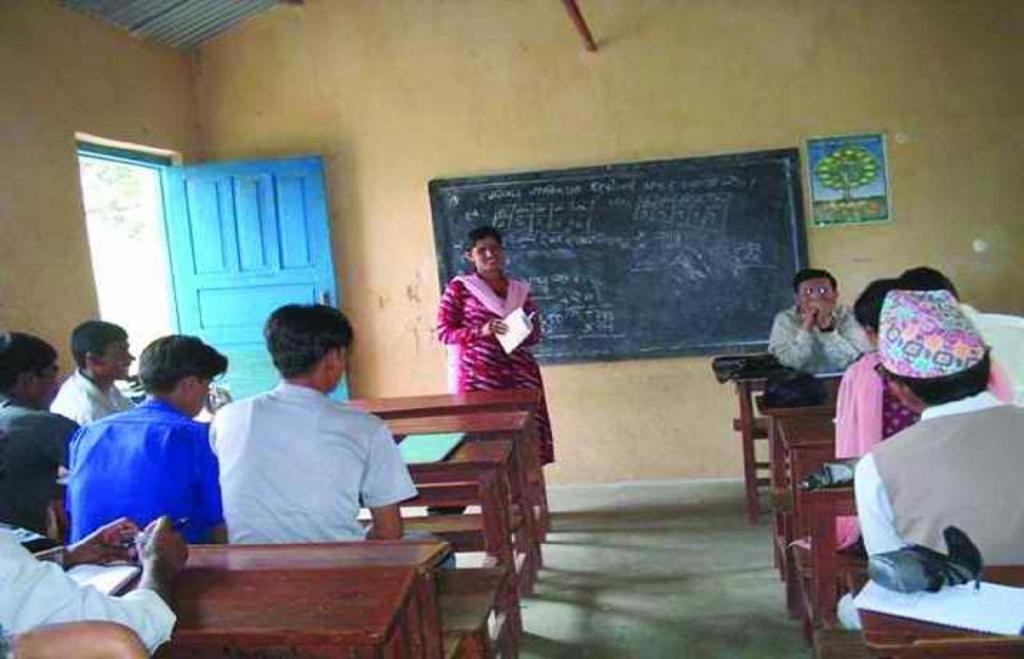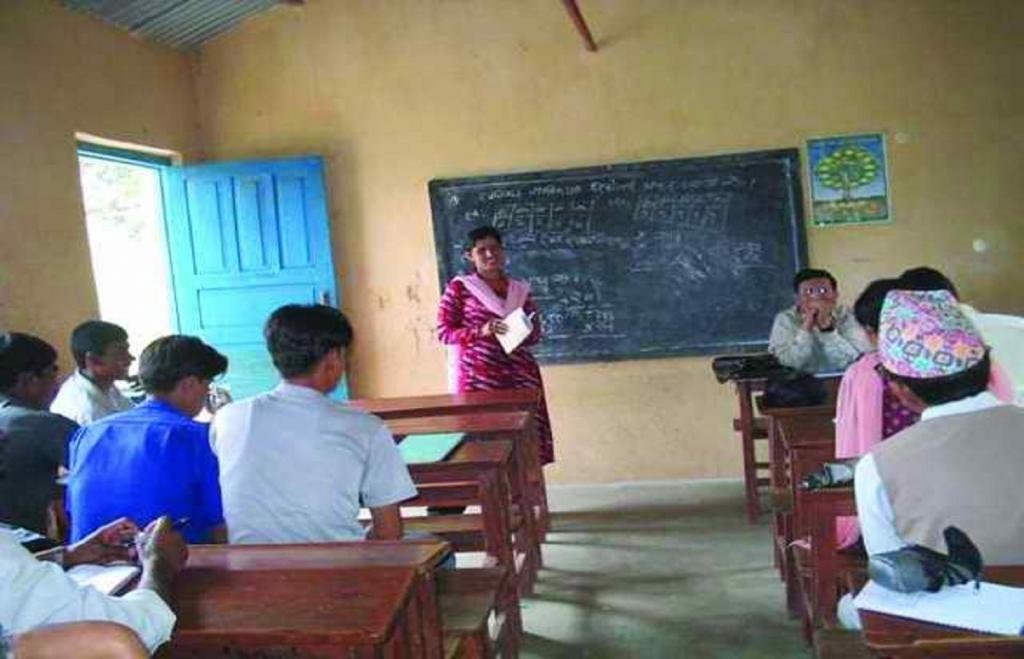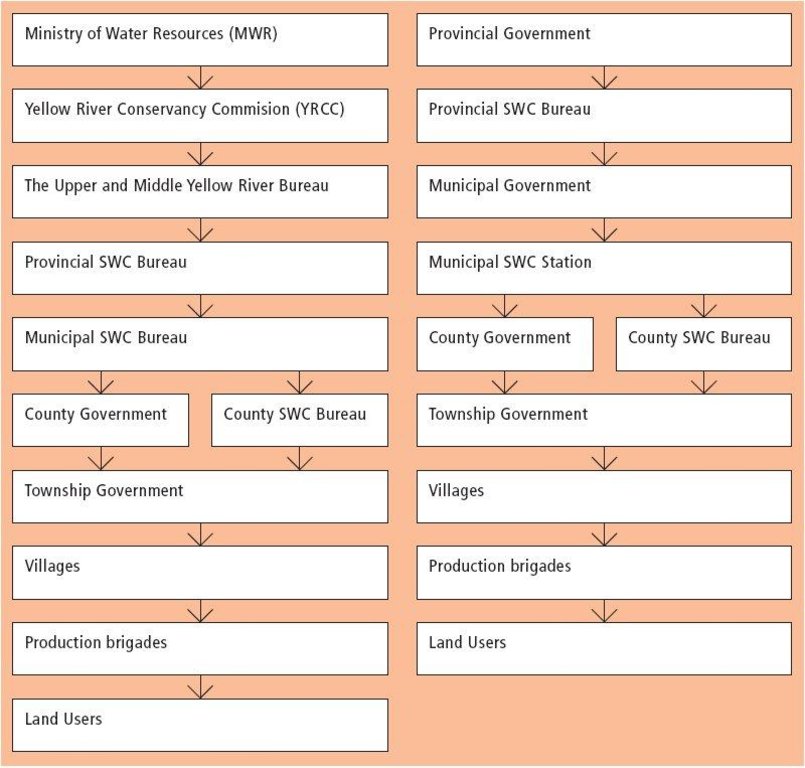Terrace approach [จีน]
- ผู้สร้างสรรค์:
- การอัพเดท:
- ผู้รวบรวม: Yaolin Wang
- ผู้เรียบเรียง: –
- ผู้ตรวจสอบ: Laura Ebneter, Deborah Niggli
approaches_2399 - จีน
ดูส่วนย่อย
ขยายทั้งหมด ย่อทั้งหมด1. ข้อมูลทั่วไป
1.2 รายละเอียดที่ติดต่อได้ของผู้รวบรวมและองค์กรที่เกี่ยวข้องในการประเมินและการจัดเตรียมทำเอกสารของแนวทาง
ผู้เชี่ยวชาญ SLM:
ผู้ใช้ที่ดิน:
ผู้เชี่ยวชาญ SLM:
ผู้เชี่ยวชาญ SLM:
ชื่อของโครงการซึ่งอำนวยความสะดวกในการทำเอกสารหรือการประเมินแนวทาง (ถ้าเกี่ยวข้อง)
Book project: where the land is greener - Case Studies and Analysis of Soil and Water Conservation Initiatives Worldwide (where the land is greener)ชื่อของโครงการซึ่งอำนวยความสะดวกในการทำเอกสารหรือการประเมินแนวทาง (ถ้าเกี่ยวข้อง)
Department of Resources and Environmental Science, Beijing Normal University (Department of Resources and Environmental Science, Beijing Normal University) - จีนชื่อของโครงการซึ่งอำนวยความสะดวกในการทำเอกสารหรือการประเมินแนวทาง (ถ้าเกี่ยวข้อง)
ISRIC World Soil Information (ISRIC World Soil Information) - เนเธอร์แลนด์ชื่อของโครงการซึ่งอำนวยความสะดวกในการทำเอกสารหรือการประเมินแนวทาง (ถ้าเกี่ยวข้อง)
GEF/OP12 Gansu Project (GEF/OP12 Gansu Project) - จีน1.3 เงื่อนไขที่เกี่ยวข้องกับการใช้ข้อมูลที่ได้บันทึกไว้ผ่านทาง WOCAT
ผู้รวบรวมและวิทยากรหลักยอมรับเงื่อนไขเกี่ยวกับการใช้ข้อมูลที่ถูกบันทึกผ่านทาง WOCAT:
ใช่
1.4 การอ้างอิงถึงแบบสอบถามเรื่องเทคโนโลยี SLM
2. คำอธิบายของแนวทาง SLM
2.1 การอธิบายแบบสั้น ๆ ของแนวทาง
Highly organised campaign to assist land users in creating terraces: support and planning from national down to local level.
2.2 การอธิบายอย่างละเอียดของแนวทาง
การอธิบายอย่างละเอียดของแนวทาง:
Before 1964, the slopes on China's Loess Plateau were cultivated up and down by machinery. Consequently soil and water were lost at high rates, and fertility and yields declined. Accessibility to cultivated land became more and more difficult due to dissection by gullies. The first terraces were established by self-mobilisation of the local land users. However there was no standard design. Furthermore, as the individual plots were very small and scattered all over the village land, terracing needed better coordination. Between 1964 and 1978, the local government at the county level took the initiative of organising farmers and planning terrace implementation according to specific technical design on a larger scale. At that time the land was still communally managed by production brigades. Through mass mobilisation campaigns people from several villages were organised to collectively terrace the land - village by village - covering around 2,000 hectares each year. Labour was unpaid.The Yellow River Conservancy Commission (YRCC) came into being in 1948 - and the Upper and Middle Yellow River Bureau in 1977. This gave greater impetus to the implementation of SWC in the Loess Plateau. After 1978, land use rights were allocated to individuals (though official ownership was still vested in the state). SWC specialists and county level SWC bureaus started to work with groups of farmers who had land use rights within a given area. Survey and design were carried out. The farmers organised themselves, consolidated the parcels of land, and then after the conservation work was done they redistributed the terraced fields.
In the 1980s the government started to financially support land users involved in SWC projects. Subsidies ranged from (approx.) US$* 20/ha in projects at county level, to US$* 55/ha for national projects (eg through the Yellow River Commission), and up to US$* 935/ha when World Bank projects were involved - as in the recent past. Implements were provided by the farmers themselves. Then, in 1988 a nationwide project in SWC - which originally was proposed at county level - was approved by the national government. Furthermore, in 1991 a national law on SWC came into force. Protection of the Yellow River and associated dams became a priority at regional and national levels. In total, within Zhuanglang County, 60 SWC specialists/extensionists cover an area of 1,550 km2, and most of the terraces were built with low levels of subsidies. Annual plans about implementation of new SWC measures were made during summer. Small areas were planned at village or township level, whereas bigger areas (> 7 hectares) were designed at county level. Implementation then took place during winter. Terracing was implemented first where access was easiest and closest to settlements, and only later, further away. * exchange rate: 1 US$ = 8 Chinese Yuan (May 2006).
2.3 รูปภาพของแนวทาง
2.5 ประเทศ ภูมิภาค หรือสถานที่ตั้งที่ได้นำแนวทางไปใช้
ประเทศ:
จีน
ภูมิภาค/รัฐ/จังหวัด: :
Gansu Province, Loess Plateau Region
Map
×2.6 วันที่เริ่มต้นและสิ้นสุดของแนวทาง
ระบุปีที่เริ่ม:
1964
2.7 ประเภทของแนวทาง
- ใช้โครงงานหรือแผนงานเป็นฐาน
2.8 เป้าหมายหรือวัตถุประสงค์หลักของแนวทาง
Aims of the approach are: - water conservation (this is a semi-arid area), - soil conservation: reduce soil loss on the sloping and erosion-prone land of loess plateau, - enhancing soil fertility, and consequently production, - improve people's living conditions, These primary objectives were to be achieved by building level bench terraces on a large scale through a structured and organised campaign. Finally at the national level, a fourth aim was added: the protection of the Yellow river (avoiding floods and reducing the sediment load)
The SLM Approach addressed the following problems: - lack of organisation, capital and technical knowledge in farmer communities to counter the underlying problems of water loss, soil loss, fertility decline and downstream effects on the Yellow River (floods and sediment) at catchment level, - absence or poor maintenance of erosion control measures
2.9 เงื่อนไขที่เอื้ออำนวยหรือเป็นอุปสรรคต่อการนำเทคโนโลยีภายใต้แนวทางนี้ไปปฏิบัติใช้
การมีไว้ให้หรือการเข้าถึงแหล่งการเงินและบริการ
- เป็นอุปสรรค
Initially farmers were not paid and as they had no immediate benefit from, or security over, the use of the land. The investment in construction was a heavy burden on poor farmers.
Treatment through the SLM Approach: After 1988, labour inputs by farmers started to be partly covered by subsidies provided by local and national government
กรอบแนวทางในการดำเนินการด้านกฎหมาย (การถือครองที่ดิน สิทธิในการใช้ที่ดินและน้ำ)
- เป็นอุปสรรค
Land users leased the land from the state and land users??? rights were insecure in the long term. Investments in SWC were not encouraged.
Treatment through the SLM Approach: National government persuaded land users to implement terraces by 'selling' the benefits (increased yield and easier workability of the land). After 1978, individual user rights motivated farmers to invest in SWC.
The existing land ownership, land use rights / water rights hindered a little the approach implementation Ownership of land and its resources belongs to state and communities: land users only lease the land for a period of time. Due to uncertainty over future user rights and possible reallocation in response to changes in population and household needs, additional investments into measures may be hindered. 1978 a first major change took place by allocating some individual land use rights.
ความรู้เกี่ยวกับ SLM การเข้าถึงการสนับสนุนด้านเทคนิค
- เป็นอุปสรรค
Poor knowledge of how to reduce water loss, soil loss and fertility loss. Technical solutions were needed at the catchment level, involving the whole population.
Treatment through the SLM Approach: Enhanced guidance by SWC specialists.
3. การมีส่วนร่วมและบทบาทของผู้มีส่วนได้ส่วนเสียที่เกี่ยวข้อง
3.1 ผู้มีส่วนได้ส่วนเสียที่เกี่ยวข้องในแนวทางนี้และบทบาท
- ผู้ใช้ที่ดินระดับท้องถิ่นหรือชุมชนระดับท้องถิ่น
- รัฐบาลแห่งชาติ (ผู้วางแผน ผู้ทำการตัดสินใจ)
3.2 การเกี่ยวข้องของผู้ใช้ที่ดินระดับท้องถิ่นหรือชุมชนระดับท้องถิ่นในช่วงต่างๆของแนวทาง
| ความเกี่ยวข้องของผู้ใช้ที่ดินระดับท้องถิ่นหรือชุมชนระดับท้องถิ่น | ระบุผู้ที่มีส่วนเกี่ยวข้องและอธิบายกิจกรรม | |
|---|---|---|
| การริเริ่มหรือการจูงใจ | ปฏิสัมพันธ์ | Land users started implementing terraces but SWC specialists at the country level assisted in designing standards for terrace construction and township governments and production brigades organised whole villages and watersheds |
| การวางแผน | ไม่ลงมือ | Being consulted in the planning phase. Experienced peasants may be involved in introducing the local situation. |
| การดำเนินการ | ปฏิสัมพันธ์ | Major organisation done through the SWC bureau specialists with the village organisation including land users. Land users were actively involved in implementation. |
| การติดตามตรวจสอบหรือการประเมินผล | ไม่มี | reporting; No participation of land users |
| Research | ไม่มี | on-station; No participation of land users |
3.3 แผนผังแสดงขั้นตอนการทำงาน (ถ้ามี)
คำอธิบาย:
Terrace construction supported by projects from MWR, YRCC and international organisations (left) and terrace construction supported by provincial funds (right).
3.4 การตัดสินใจเลือกใช้เทคโนโลยี SLM
ระบุผู้ที่ทำการตัดสินใจเลือกเทคโนโลยีมากกว่าหนึ่งวิธีไปปฏิบัติใช้:
- ผู้เชี่ยวชาญ SLM เป็นผู้ตัดสินใจหลัก ที่ติดตามให้คำปรึกษากับผู้ใช้ที่ดิน
การอธิบาย:
Decisions on the method of implementing the SLM Technology were made by by politicians / leaders. Decisions are made by politicians/SWC specialists; land users are consulted in the planning phase (experienced farmers may be involved initially).
4. การสนับสนุนด้านเทคนิค การสร้างขีดความสามารถ และการจัดการด้านความรู้
4.1 การสร้างขีดความสามารถ / การอบรม
ได้มีการจัดอบรมให้แก่ผู้ใช้ที่ดินหรือผู้มีส่วนได้ส่วนเสียคนอื่น ๆ หรือไม่:
ใช่
ให้ระบุว่าใครเป็นผู้ได้รับการอบรม:
- ผู้ใช้ที่ดิน
รูปแบบการอบรม:
- กำลังดำเนินการ
- เกษตรกรกับเกษตรกร
- ใช้พื้นที่ทำการสาธิต
- จัดคอร์ส
หัวข้อที่พูด:
Until 1978 the 'pyramid system' was used: the county level trained the township level, which trained the village level, which in turn trained the production brigades/farmers, who then trained other production brigades and farmers.
4.2 การบริการให้คำแนะนำ
ผู้ใช้ที่ดินมีการเข้าถึงการรับบริการให้คำปรึกษาหรือไม่:
ใช่
ระบุว่ามีบริการให้คำปรึกษาหรือไม่:
- ไปเยี่ยมชมสถานที่
การอธิบาย/แสดงความคิดเห็น:
Key elements: Pyramid system is also used for extension. At each government level (county, district and provincial levels) there is a SWC division in charge of SWC activities includ. extension (farm visits)
4.3 การเสริมความแข็งแกร่งให้กับสถาบัน (การพัฒนาองค์กร)
สถาบันได้รับการจัดตั้งขึ้นมาหรือเสริมความแข็งแกร่งโดยแนวทางนี้หรือไม่:
- ใช่ ปานกลาง
ระบุระดับของสถาบันที่ได้รับการเสริมความแข็งแกร่งหรือจัดตั้งขึ้นมา:
- ท้องถิ่น
ระบุประเภทของการให้ความช่วยเหลือสนับสนุน:
- ด้านการเงิน
4.4 การติดตามตรวจสอบและประเมินผล
การติดตามตรวจสอบและประเมินผลเป็นส่วนหนึ่งของแนวทางหรือไม่:
ใช่
ความคิดเห็น:
bio-physical aspects were regular monitored through measurements; indicators: runoff loss, sediment load, soil moisture
technical aspects were regular monitored through measurements; indicators: structure of terraced areas, slope of risers, levelness of terrace surface
socio-cultural aspects were ad hoc monitored through observations; indicators: land users' perceptions of terraces
economic / production aspects were regular monitored through measurements; indicators: yield, income of land users
area treated aspects were regular monitored through measurements; indicators: terraced area
land users involved aspects were ad hoc monitored through measurements; indicators: number of farmers directly involved in terracing and farmers benefited directly
management of Approach aspects were ad hoc monitored through observations; indicators: number of small watersheds terraced
There were changes in the Approach as a result of monitoring and evaluation: The approach changed fundamentally from self-mobilisation to organised mass movements guided by the government.
4.5 การวิจัย
การวิจัยเป็นส่วนหนึ่งของแนวทางหรือไม่:
ใช่
ระบุหัวข้อเรื่อง:
- เศรษฐศาสตร์หรือการตลาด
- นิเวศวิทยา
- เทคโนโลยี
ให้ข้อมูลเพิ่มเติมและให้ระบุผู้ทำการวิจัย:
carried out at the provincial and national levels, mostly by technical staff. Land users have not been involved. Terrace building is based on scientific design, according to local conditions.
Research was carried out on station
5. การสนับสนุนด้านการเงินและวัสดุอุปกรณ์
5.1 ระบุงบประมาณประจำปีสำหรับแนวทาง SLM นี้
แสดงความคิดเห็น (แหล่งของการระดมทุน ผู้บริจาคคนสำคัญ):
Approach costs were met by the following donors: government (national): 10.0%; local community / land user(s) (-): 90.0%
5.3 เงินสนับสนุนสำหรับปัจจัยนำเข้า (รวมถึงแรงงาน)
ถ้าแรงงานโดยผู้ใช้ที่ดินเป็นปัจจัยนำเข้าที่มีอยู่มากมาย ระบุด้วยว่าเนื่องจาก:
- จ่ายเป็นเงินสด
ความคิดเห็น:
Beteween the 1960s-1970s farmers were not paid for their labour inputs. From the 1980s onwards the government rewarded the community for establishment of terraces with cash, projects paid on the basis of area treated, and at different rates.
5.4 เครดิต
มีการจัดหาเครดิตมาให้ภายใต้แนวทาง SLM หรือไม่:
ใช่
ถ้าใช่ ระบุเงื่อนไข (อัตราดอกเบี้ย การชำระคืน):
Interest rate charged: 0.5%; repayment conditions: Credit was available at interest rates (0.5-1% per year) lower than the market rates.
6. การวิเคราะห์ผลกระทบและการสรุป
6.1 ผลกระทบของแนวทาง
ช่วยให้ผู้ใช้ที่ดินนำเอาเทคโนโลยี SLMไปใช้และบำรุงรักษาสภาพไว้ได้หรือไม่:
- ไม่ใช่
- ใช่ เล็กน้อย
- ใช่ ปานกลาง
- ใช่ อย่างมาก
Soil and water management have improved a lot: easier workability, intensified land use, in-situ water retention, top soil and fertilizer/manure are not washed away, etc.
Did other land users / projects adopt the Approach?
- ไม่ใช่
- ใช่ เล็กน้อย
- ใช่ ปานกลาง
- ใช่ อย่างมาก
As the Zhuanglang area was one of the pioneering areas for the Loess Plateau other regions were able to profit from the approach. But likewise, experiences gained in other counties helped improve the approach, and a basically similar approach has been applied over the whole Loess Plateau - though the level of subsidies for construction is much higher under World Bank projects.
6.3 ความยั่งยืนของกิจกรรมของแนวทาง
ผู้ใช้ที่ดินสามารถทำให้สิ่งต่างๆ ที่ได้ปฏิบัติใช้โดยแนวทางนี้ยั่งยืนได้หรือไม่ (โดยไม่มีการสนับสนุนจากภายนอก):
- ไม่แน่ใจ
ถ้าตอบว่าไม่หรือไม่แน่ใจ ให้ระบุและแสดงความคิดเห็น :
Given the recent escalation in payments made to land users for implementation under certain projects it seems that the costs will be too high to sustain. Currently the Ministry of Finance is demanding that in-depth cost-benefit analyses are carried out involving environmental, social as well as economic assessments.
6.4 จุดแข็งและข้อได้เปรียบของแนวทาง
| จุดแข็ง / ข้อได้เปรียบของแนวทางในทัศนคติของผู้รวบรวมหรือวิทยากรหลัก |
|---|
| Farmers are getting direct benefits: marked increase in productivity, improved workability of the land, etc. |
| The collective activities/organisation strengthens the community and enhances social stability and coherence within villages; collective activities are expanded to other sectors, such as road construction, supply of agrochemical inputs, etc. |
| Heavy investment made by the land users and local as well as national government to reduce land degradation. |
| Many people involved and trained at different levels (pyramid system; see training/extension); commitment by all stakeholders. |
| Efficient organisation, planning to cover a large area, which is very susceptible to land degradation. |
6.5 จุดอ่อน / ข้อเสียเปรียบของแนวทางและวิธีในการแก้ไข
| จุดอ่อน / ข้อเสียเปรียบในทัศนคติของผู้รวบรวมหรือวิทยากรหลัก | สามารถแก้ไขปัญหาได้อย่างไร |
|---|---|
| High costs: farmers depend on external support from the government, they are not willing to invest their labour without payments (as it used to be in communist times) | New approach: give farmers loans for construction as now they use machines to do the work. In addition, search for cheaper SWC technologies and for improving the benefits. |
| The steeper slopes which are also further away from the village, are now often not cultivated and maintained as they are too far and marginal in production | Solutions need to be found for these areas, eg afforestation. |
7. การอ้างอิงและการเชื่อมต่อ
7.1 วิธีการหรือแหล่งข้อมูล
- ไปเยี่ยมชมภาคสนาม การสำรวจพื้นที่ภาคสนาม
- การสัมภาษณ์กับผู้ใช้ที่ดิน
7.2 การอ้างอิงถึงสิ่งตีพิมพ์
ชื่อเรื่อง ผู้เขียน ปี ISBN:
Jiangdingsheng, ACTA CONSERVATIONIS SOLI ET AQUAE SINICA, 1987. Discussion on section design of the terrace on the Loess Plateau; Vol. 1, No. 2,
ชื่อเรื่อง ผู้เขียน ปี ISBN:
Corpus of economic benefits of water and soil measures, p77-102, 510-514
ช่องทางในการสืบค้น และราคา:
Water and Soil Conservation Department of Yellow River Water Resources Committee of Ministry of Wate
ชื่อเรื่อง ผู้เขียน ปี ISBN:
Corpus of Test Research of Water and Soil Conservation, p130-185 (the second volume)
ช่องทางในการสืบค้น และราคา:
Suide Water and Soil Conservation examination station
ลิงก์และโมดูล
ขยายทั้งหมด ย่อทั้งหมดลิงก์
ไม่มีลิงก์
โมดูล
ไม่มีโมดูล






